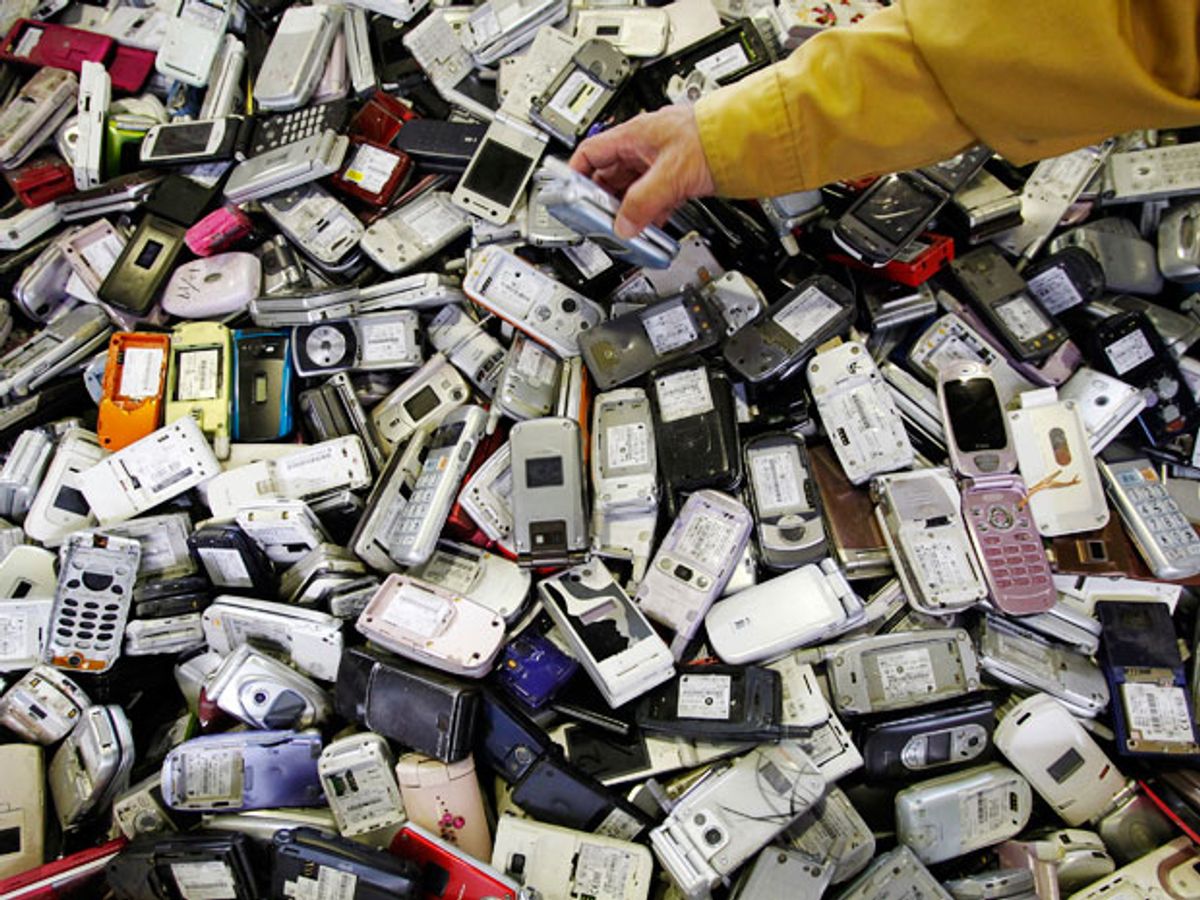Discarded consumer electronics constitute a veritable Mount Everest of toxic trash. The worst culprits are rich nations that disproportionately send this “e-waste” to the world’s poorest countries for disposal. But new research is uncovering the true scope of the problem and the best way to solve it.
According to the U.S. Environmental Protection Agency, Americans consumers alone dispose of more than 500 000 computers, TVs, and cellphones per day. And even when those items are said to be recycled, the truth is sometimes different. The United Nations treaty known as the Basel Convention has estimated that as much as 80 percent of “safely disposed” e-waste is, in fact, shipped to developing countries to be burned, buried, or chemically dissolved—burdening some cities and watersheds in Asia and Africa with public health problems for years to come.
Moreover, according to a new study to be presented this week at a meeting of the American Chemical Society (ACS), existing e-recycling laws on the books in 13 U.S. states are largely ineffective. (There is no nationwide e-recycling and safe disposal law in the United States. By contrast, the European Union has had such a directive on its books since 2003.)
Jean-Daniel Saphores, professor of civil and environmental engineering at the University of California, Irvine, and his colleagues at UC Irvine and the University of Limerick, in Ireland, surveyed nearly 3000 Americans of all ages, income levels, ethnicities, and geographic areas to find out what their opinions and practices were on e-waste and e-recycling. They discovered that respondents who lived in the 13 states that mandated e-recycling gave roughly the same answers as those in the 37 states with no e-recycling laws. In other words, the statewide e-recycling programs had no noticeable effect on people’s behavior and habits. Saphores speculates that this is likely due to poor visibility, insufficient public outreach, and a lack of enforcement for these programs.
But the researchers did find one glimmer of hope in California. That state’s 2004 law requires cellphone retailers to collect used phones and either recycle, reuse, or dispose of them properly. Saphores says that because the state has made its cellphone e-recycling easy and convenient, it has helped change Californians’ behavior. On average, the researchers found Californians are as much as seven times as likely to recycle their cellphones as similar Americans in other states.
But state-by-state measures in the United States can sometimes be subverted, and nationwide solutions are best, Saphores says. “I think Europe is doing it better in general,” he says. “You have European directives that focus on the collection of e-waste and set targets per capita. They’re having problems with enforcing this policy, but at least they have a policy.”
Indeed, Europe’s e-waste policy can still accomplish much, even beyond the EU’s borders, says Carol Handwerker, professor of materials engineering at Purdue University. She points out that the electronics industry has taken toxins out of its worldwide product lines before, in response to EU action and pressure.
In the late 1980s, the industry voluntarily phased out the use of chlorofluorocarbons (CFCs), while an industry coalition (prompted by an EU ban) in 1999 enacted a phaseout of lead used in solder for electronics.
Handwerker says the lead phaseout is especially relevant, because the same organization—the International Electronics Manufacturing Initiative (iNEMI)—has recently implemented a 20-year road map toward sustainable electronics that could reduce or eliminate some of the toxins used in electronics manufacturing today.
“They’ve embraced the definitions of what sustainable electronics would look like,” says Handwerker, who will be discussing her group’s work in helping draft the iNEMI initiative at the ACS conference this week.
Included in iNEMI’s “Environmentally Sustainable Electronics Roadmap” are a search for alternatives to polyvinyl chloride in high-data-rate cables, better nanomaterial measurement and reporting, and more recycling-friendly design (such as easily disassembled devices). The guidelines also call for a greater awareness of “conflict minerals,” such as tin, tantalum, and tungsten from mines controlled by rogue militias in the Democratic Republic of Congo.
Bill Tomlinson, professor of informatics at UC Irvine, says the initiatives like the iNEMI effort are significant. “Until there are policies or pressures in place to force those costs into the economic stream, there won’t be a real incentive to change,” says Tomlinson, author of the 2010 book Greening Through IT.
And whether it involves products designed with less-hazardous materials or stepped-up e-recycling programs around the world, the best kind of sustainable electronics revolution will be like the CFC and lead-solder success stories before it: ubiquitous, effective, and all but invisible to the consumer.
About the Author
Mark Anderson is a frequent contributor to IEEE Spectrum. He has recently written about cellphone metadata, the controversial 787 Dreamliner battery fires, and lithium-ion battery recycling.
Margo Anderson is senior associate editor and telecommunications editor at IEEE Spectrum. She has a bachelor’s degree in physics and a master’s degree in astrophysics.



